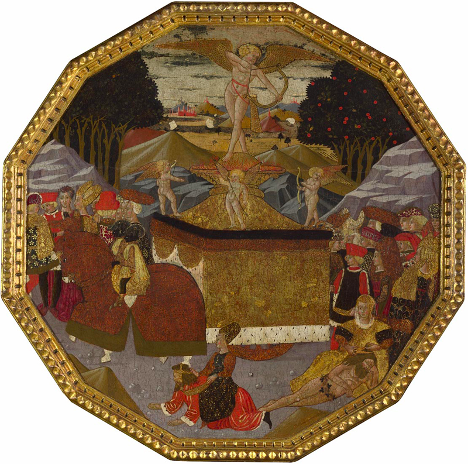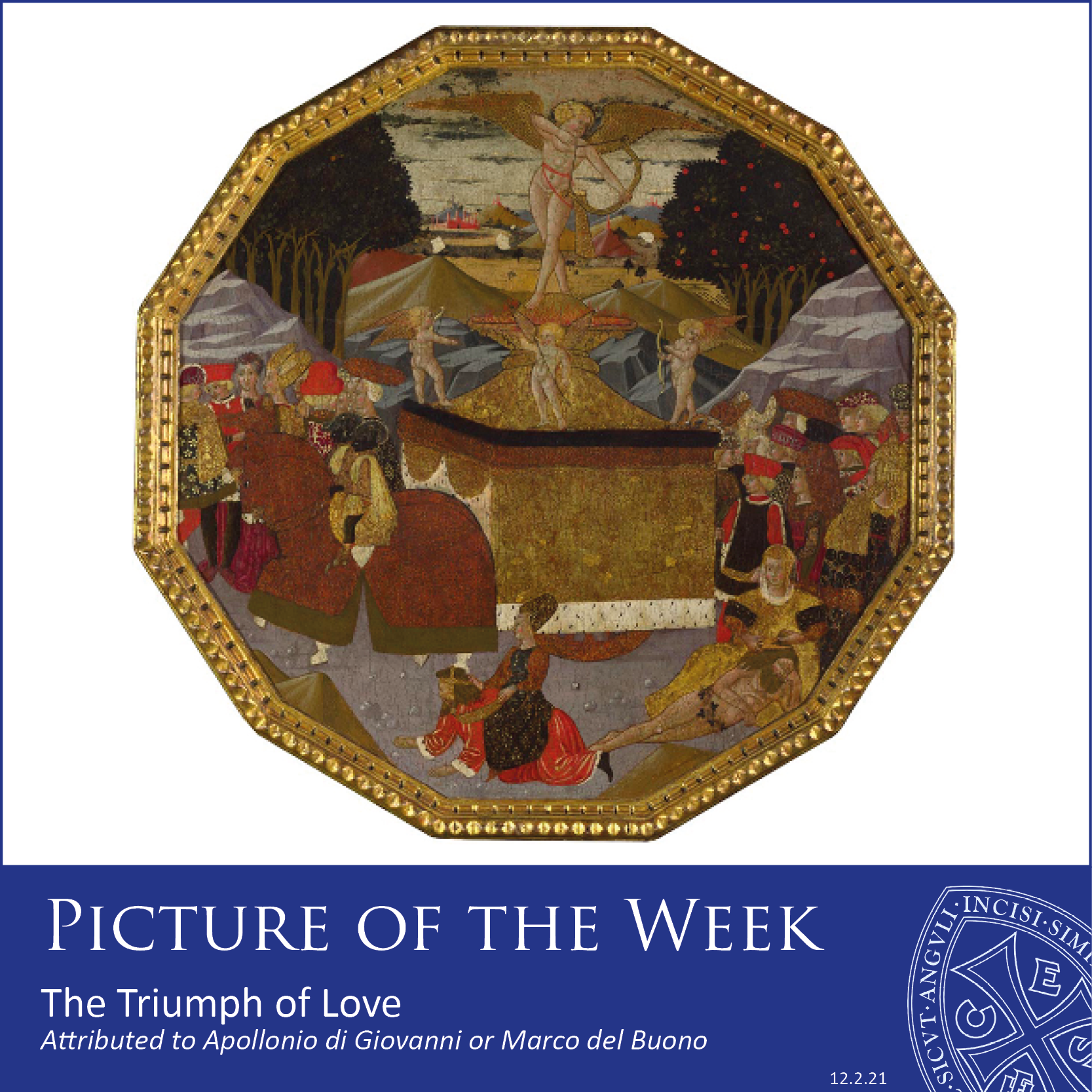It’s Valentine’s Day this weekend and so, of course, my thoughts turned to tales of love and the joys that it can bring but beware – there may be pitfalls!
Sarah Carr Gomm, Head of History of Art
The Triumph of Love, attributed to Apollonio di Giovanni or Marco del Buono, c.1455, tempera on wood, 62 cm, National Gallery, London

In the Renaissance, a desco da parto, a painted, many-sided tray such as this, was given to a wife by her wealthy husband, either while pregnant or after a successful birth and I’m not sure if this was adequate compensation for what might well have been an extremely painful, near death experience. They were used, covered in a protective cloth, to bring food during the mother’s confinement, or rest period, which might have lasted up to a month, and they were later hung on a wall as decoration. They probably depict appropriate subjects such as The Birth of the Virgin or the mother in bed being visited by friends and family – a sort of post-birth baby shower – or, in this case, something a bit more complicated.
The subject of this tray is confidently called The Triumph of Love and is based on the fourteenth century poetry of Petrarch who tells us how he fell asleep and dreamt of Love, personified by a naked young man with wings and a bow and arrow. Love rides a fiery triumphal chariot pulled by white horses with black riders and is accompanied by many of his conquests, who are being stung by the arrows of four small cupids. They continue their procession until they reach Cyprus, the Island of Venus, the Goddess of Love. So far, so happy but in the foreground on the right is the scene where Delilah cut off Samson’s hair while he slept; he lies parallel to the frame, naked, in an awkward rigid pose. Bribed by Samson’s enemies, Delilah discovered that her lover’s strength was derived from his hair and she deprived him of it: she is a warning to men of the treachery of women. In the centre of the foreground is Phyllis and Aristotle. The beautiful seductress captivated the wise old philosopher and persuaded him to let her sit on his back as he walked on all fours, a cautionary tale that proves that a woman’s charms can make a fool of even the most intellectual of men.














